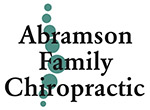Weekly Updates
Neck Disorder May Worsen Jaw Pain and Function
Examinations of temporomandibular (TMD) patients revealed that those with restricted cervical range of motion experienced more severe TMDrelated pain and disability than TMD patients with normal cervical range of motion. The findings suggest that dysfunction in the cervical spine may play a role in TMD and treatment to restore normal motion in the neck—such as…
Read MoreImproved Posture
A literature review found that manual therapy techniques—such as those used by doctors of chiropractic—are an effective intervention for improving lateral pelvic tilt and reducing forward head posture and thoracic kyphosis. Gait & Posture, June 2022 Prediabetes Linked to Heart Attack Prediabetes is a term used to describe elevated blood sugar levels that have not…
Read MoreEffective Treatment for Cervicogenic Dizziness
A systematic review that included 13 studies found that the combination of manual therapies and specific exercises is an effective approach for managing dizziness that originates from dysfunction in the cervical spine. Doctors of chiropractic often use manual therapies like spinal manipulation and mobilization in combination with exercises in the management of musculoskeletal disorders of…
Read MoreManual Therapies Plus Stabilization Exercises for Chronic Neck Pain
Among a group of 58 patients with chronic neck pain and mobility deficits in the upper cervical spine, researchers found that the combination of spinal manipulative therapy, mobilization therapy, and stabilization exercises targeting the upper cervical spine led to improvements in pain and range of motion that were not observed in participants in a stabilization…
Read MoreRecommendations for Acute Cervical Radiculopathy
An expert panel concluded that because the risk-benefit ratio for surgery is less favorable for cervical radiculopathy, conservative treatment options (like chiropractic care) should be the initial treatment approach for the condition. The panel recommends patient education, spinal manipulative therapy, and foraminal opening exercises in the acute stage; individualized physical activity including supervised motor control,…
Read MoreMobilization and Exercise for Shoulder Pain
Among a group of 23 patients with shoulder pain lasting longer than six weeks, those treated with a combination of glenohumeral mobilization with movement and shoulder exercises—an approach often used by doctors of chiropractic—experienced meaningful improvements in shoulder pain, disability, and range of motion within one month. Journal of Manual and Manipulative Therapeutics, February 2022…
Read MoreProlonged Sitting at Work Affects the Spine
Assessments of office workers revealed that at the end of an eight-hour workday, participants had experienced a significant reduction in both standing and sitting height, along with an increase in spinal pain. The findings highlight the importance of breaking up prolonged sitting time with frequent breaks to stretch or walk. International Journal of Occupational Safety…
Read MoreDizziness and Chronic Neck Pain
Among a group of 133 patients under treatment for chronic neck pain, 43% reported concurrent dizziness. Additionally, those with both neck pain and dizziness were more likely to experience more intense neck pain and disability, along with lower scores on quality of life assessments. Doctors of chiropractic are skilled in the management of both neck…
Read MoreNeck Pain and Migraines
A systematic review found that migraine headache patients are three times more likely than individuals without a history of headache to have neck pain (77% vs. 23.5%). Past research suggests that addressing cervical spine issues in patients with migraines—with chiropractic care, for example—may reduce headache frequency and intensity. Cephalagia, February 2022 Health Alert: Steroid Medications…
Read MoreSpinal Mobilization & Postural Exercises Reduce Headaches
Among a group of 72 cervicogenic headache patients, researchers observed that a four-week intervention that included posture corrective exercises and spinal mobilization therapy led to significant improvements in headache intensity, neck pain, and neck disability. Furthermore, the patients continued to report such benefits at a follow-up visit four weeks after the conclusion of care. Doctors…
Read More









